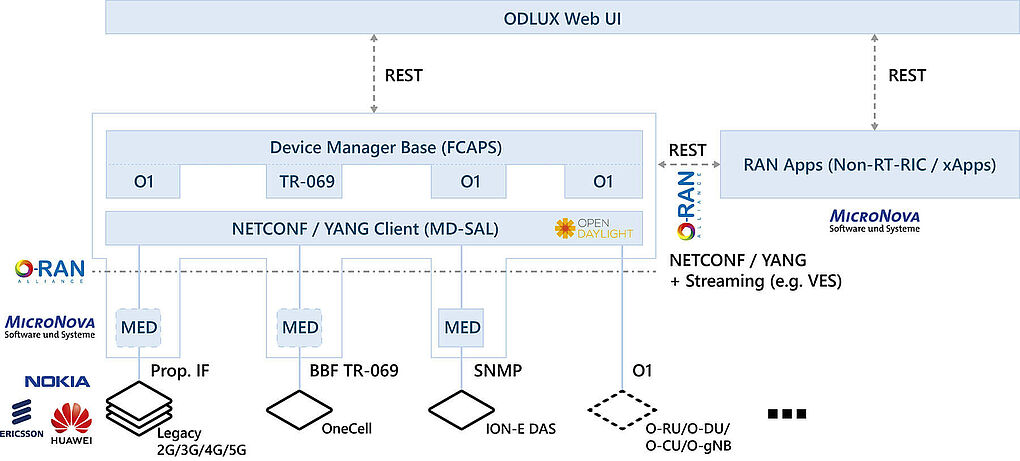There is no doubt that 5G is a key technology for a sustainable infrastructure – and will contribute to economic development like no other. Industry, agriculture, transport, medicine, urban infrastructure, private households – 5G will link all the different domains of a country and enrich them with a wide range of new services. At the same time, demand for these new services is growing – driven mainly by industry – in the areas of real-time data acquisition from countless sensors and devices. Extremely high bandwidths with low, guaranteed latency and high reliability for critical applications are key to this.
Innovative approaches to network design and architecture are required if these growing demands are to be met. Mobile Network Operators (MNOs) must rapidly deploy these new technologies to meet their customers' expectations. They must develop, scale up, and roll out innovations as quickly and cost-effectively as possible. However, in order to ensure economic efficiency and to protect previous investments, concepts are also needed to integrate or transfer the network's "legacy" into new forms of architecture in a cost-effective and efficient way.
SDN: Innovative boost for network configuration
Software-Defined Networking (SDN) and Network Functions Virtualization (NFV) are the key; they create a whole new world to configure, optimize and maintain customer-focused mobile networks – a world that benefits operators and their customers alike. SDN as a network architecture is based on control via software. The basis is the separation of the data plane or user plane from the management plane or control plane.
The associated opening of the previously restricted, proprietary network platforms creates the basis for a centrally managed and programmable network that can therefore be managed very flexibly: Operators can easily add new components and automatically receive all information relevant to them. Changes made via a network controller are quickly applied to the components concerned and do not need to be configured or assigned individually.
NFV: Abstraction of network functions
NFV as a method for virtualizing network functions or services abstracts the network functions (e.g. route calculation or traffic control) and decouples them from the proprietary hardware. This allows them to run as independent software on virtual machines. As a result, the development and use of vendor-independent, standardized hardware and software solutions for building networks are possible. The use of commercial off-the-shelf (COTS) hardware and virtual networking capabilities provides significant benefits to operators in terms of cost, time to market, vendor independence, scalability, and agility.
Interaction between SDN, NFV and COM5.SDN
NFV and SDN are not directly dependent on each other – but they are interrelated and share similarities. Both are based on the principles of virtualization and abstraction. SDN separates forwarding functions and control functions within the network in order to create a centrally managed network. NFV is based on abstracting network functions from the hardware, which in turn supports SDN, as it provides the infrastructure to run SDN software. This allows a purpose-related joint use of both approaches, using standard hardware, thereby providing mobile network providers and campus network operators with a flexible, agile, and efficient network architecture.
With COM5.SDN, MicroNova addresses exactly these requirements via its own product line or strategic roadmap, serving the core areas of future system architecture. The main focus is on migrating existing technology to the new structures. This enables valuable integration of new network and service technologies into the network operators' ecosystem. COM5.SDN forms the basis for various tools and products – starting with COM5.SDN Mediator, which offers an entry point into the SDN world, up to the future product COM5.SDN Radio Intelligence Controller, a non-real-time radio controller (or non-RT-RIC for short). A roadmap has thus been created covering the core areas of future system architecture.




